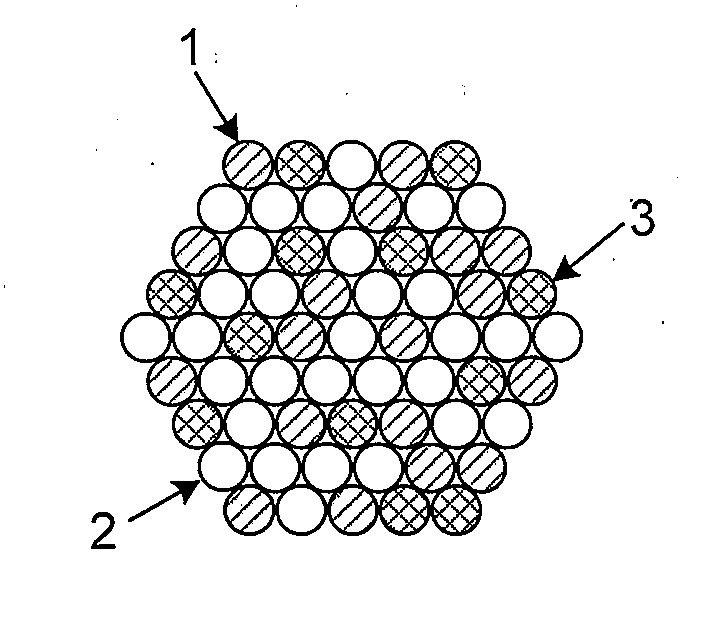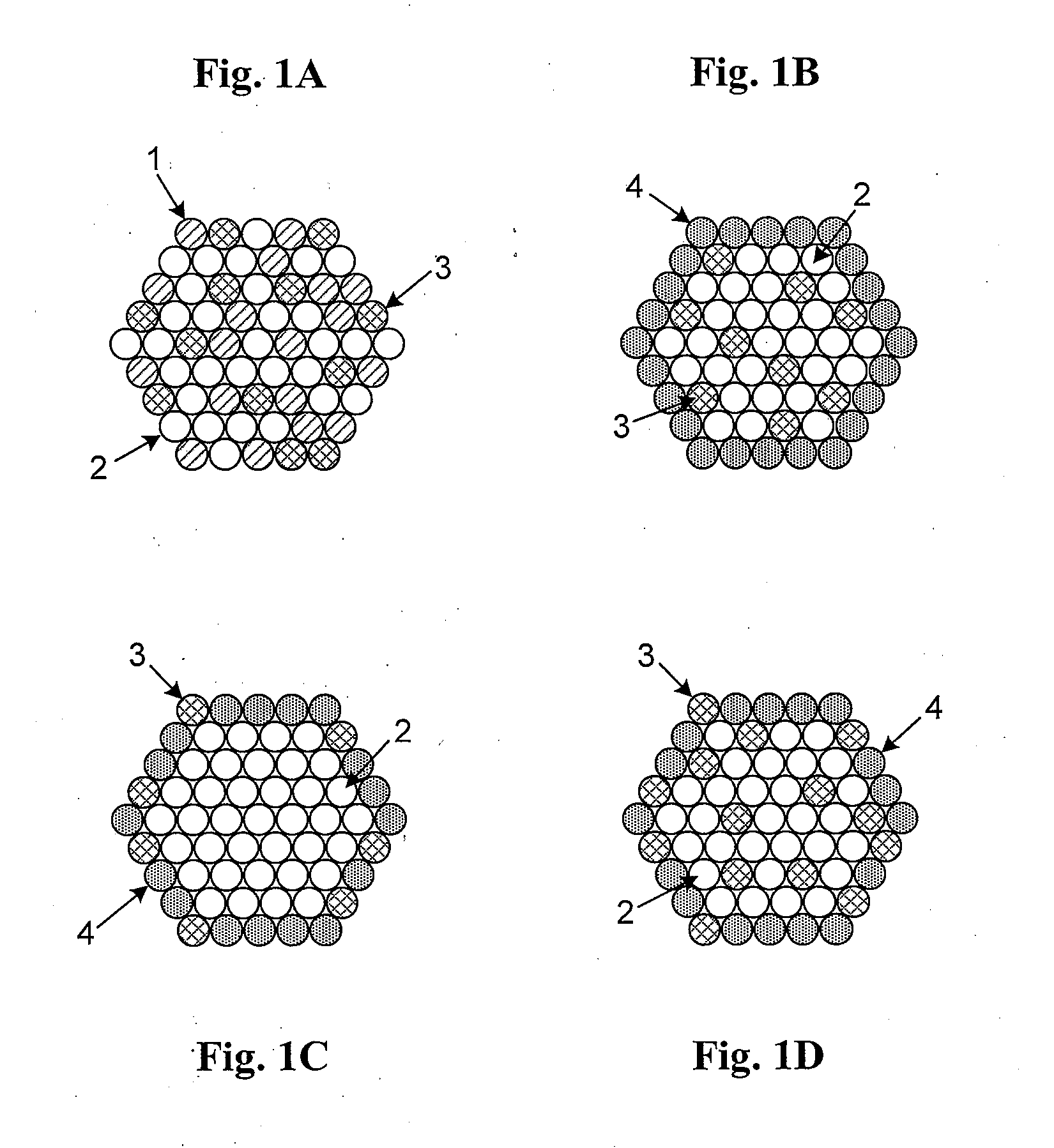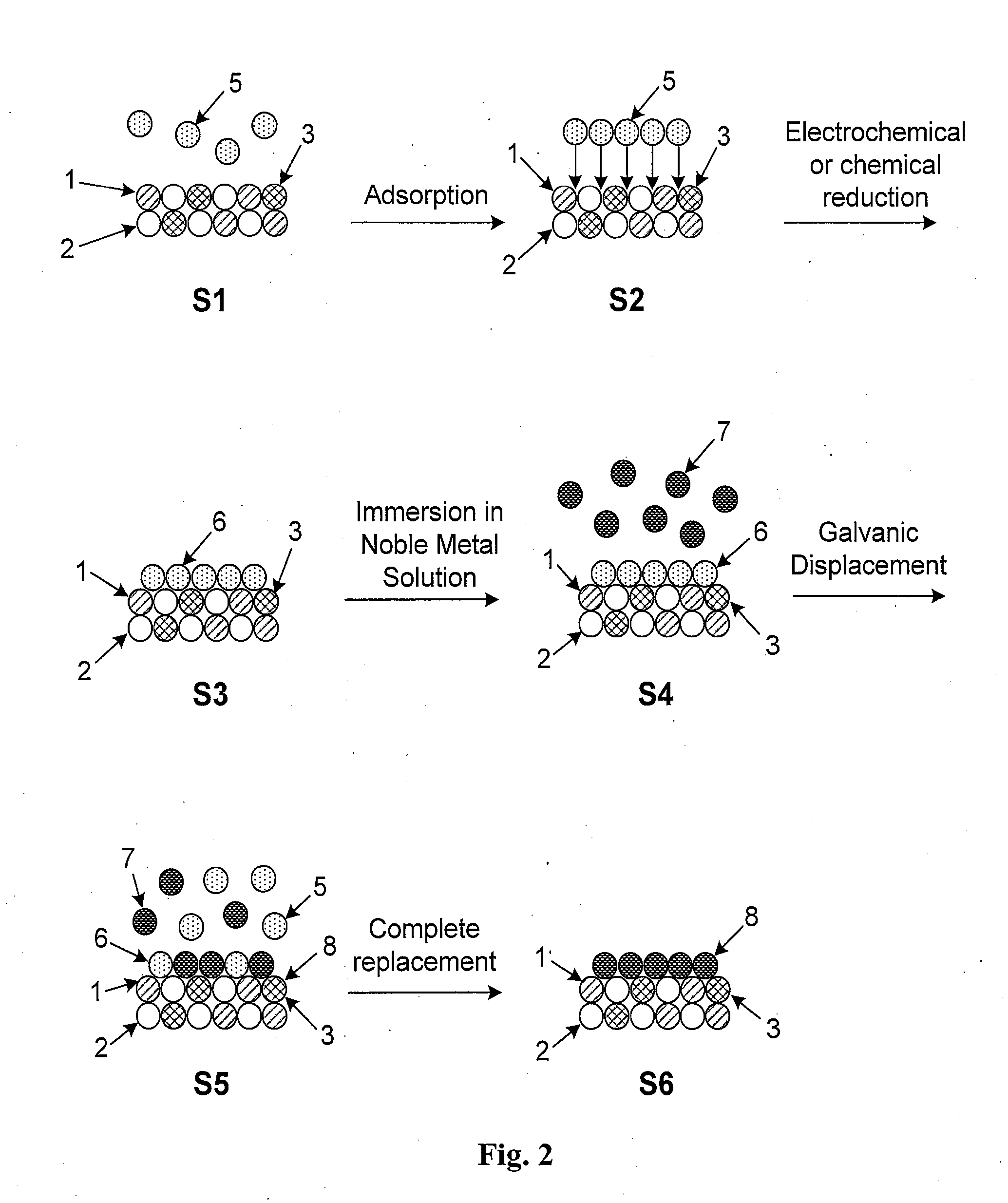High Stability, Self-Protecting Electrocatalyst Particles
a technology of electrocatalyst particles and high stability, which is applied in the direction of physical/chemical process catalysts, cell components, metal/metal-oxide/metal-hydroxide catalysts, etc., can solve the problems of affecting the successful implementation of fuel cells in commercially available fuel cells, and affecting the stability of electrocatalyst particles
- Summary
- Abstract
- Description
- Claims
- Application Information
AI Technical Summary
Benefits of technology
Problems solved by technology
Method used
Image
Examples
example 1
[0091]In another embodiment, carbon-supported Pd—Ti nanoparticle alloys were prepared by dissolving TiCl4(OC5H10)2 powder in dimethyl ether (DME). The resulting solution is mixed with Pd(acac)2, a thiol, and carbon powder at room temperature. The nominal ratio of Pd to Ti is set as 3:1 in order to produce Pd3Ti / C nanoparticle alloys. The mixture is then sonicated, stirred at room temperature for two hours, and then dried under an atmosphere of H2 gas. The resulting powder was then transferred to an oven where it was heated to 900° C. in an Ar / H2 atmosphere for two hours and cooled to room temperature while maintaining a continuous Ar / H2 flow. The microstructure of the resulting Pd3Ti / C nanoparticles was examined by transmission electron microscopy (TEM) and a sample micrograph is provided in FIG. 5. The carbon support is illustrated in FIG. 5 as the lighter-colored background material whereas the Pd3Ti nanoparticles appear as comparatively darker-colored particles which appear hexag...
example 2
[0096]In yet another embodiment, carbon-supported Pd—Re nanoparticle alloys (PdRe / C) were prepared in a manner analogous to that described in Example 1. The PdRe / C nanoparticles were prepared by dissolving ReCl4(OC5H10)2 powder in dimethyl ether (DME). The resulting solution is mixed with Pd(acac)2, a thiol, and carbon powder at room temperature. The ratio of Pd to Re is set as 1:1 in order to produce nanoparticle alloys having equal amounts of Pd and Re. The mixture is then sonicated, stirred at room temperature for two hours, and then dried under an atmosphere of H2 gas. The resulting powder was then transferred to an oven where it was heated under an H2 atmosphere to either 800° C. or 600° C. for three hours and then cooled to room temperature while maintaining a continuous H2 flow.
[0097]X-ray diffraction (XRD) analyses of the PdRe / C nanoparticles and commercial Pd / C nanoparticles were obtained over the range 2θ=30° to 70° and the resulting spectra are provided in FIG. 9. The top...
PUM
| Property | Measurement | Unit |
|---|---|---|
| temperature | aaaaa | aaaaa |
| temperature | aaaaa | aaaaa |
| temperature | aaaaa | aaaaa |
Abstract
Description
Claims
Application Information
 Login to View More
Login to View More - R&D
- Intellectual Property
- Life Sciences
- Materials
- Tech Scout
- Unparalleled Data Quality
- Higher Quality Content
- 60% Fewer Hallucinations
Browse by: Latest US Patents, China's latest patents, Technical Efficacy Thesaurus, Application Domain, Technology Topic, Popular Technical Reports.
© 2025 PatSnap. All rights reserved.Legal|Privacy policy|Modern Slavery Act Transparency Statement|Sitemap|About US| Contact US: help@patsnap.com



